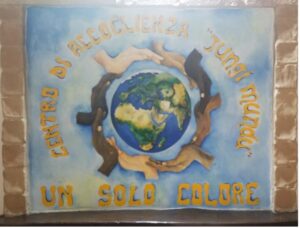Share
“An attack on Spanish borders“, Spanish Interior Minister Fernando Grande-Marlaska defined this way during his appearance before the the plenary session of the Congress of Deputies on the tragedy that occurred in Melilla on June 24, 2022, in which 23 people officially died and 217 people were injured.
Last June 24 saw the worst of the many attempts by migrants to cross into the Spanish enclaves of Ceuta and Melilla in North Africa over the years. According to official sources of the Moroccan National Human Rights Council and the Spanish Interior Minister, 23 people died of “mechanical asphyxiation”. However, Spanish NGOs put the figure at 37 people and question the actions of the Spanish and Moroccan security forces. These deaths, according to these official sources, occurred in Moroccan territory and the action of the security forces was appropriate and proportionate.
Nevertheless, the United Nations, the African Union and independent rights groups have denounced the use of excessive force by Moroccan and Spanish security personnel. In addition, several recent investigations, such as the one carried out by Africa Eye, the documentary strand from the BBC, and the one conducted by Lighthouse Reports, reveals that during the Melilla tragedy at least one person died on Spanish soil and from the images, it is not excluded that there could be more deaths on Spanish border territory.
Apart from the seriousness of the death of these migrants, the demonstration of political incapacity on the part of Morocco and Spain to deal with this tragedy is worrying. The way in which political representatives have qualified this event as an “attack” demonstrates once again the current weakness of the global border regime and the border order of things, as well as the consequent dehumanization of migrants in these contexts. In addition, another worrying detail is the qualification of “no man’s land” to designate the place where these tragic deaths occurred, demonstrating the ability to evade responsibility by alleging a non-existent term in international law, which contradicts the discourse of the border nation-state.
As already pointed out by authors such as Malkki (1995) or Arendt (1998), situations such as the legalization or criminalization of migrant populations, based on legal categories constructed within the framework of laws and public policies – as if it were not above all a social, political and cultural issue, or as if it were not the political logic of xenophobic nation states – should be questioned. The categorization by the Spanish Minister of the Interior of an attack on the borders of the Spanish state, by the mere attempt of hundreds of people to seek opportunities in another country, reproduces this criminalization of migration and the fragility of borders in the framework of the contemporary nation-state, once again. Therefore, we see with this response to the tragedy, the display of the problematization and dehumanization of the movements of people, in which is understood that the problem is to solve the displacement itself, and not the circumstances that led to these displacements.
To conclude and taking up the words of the Spanish Minister of the Interior, this “attack” has called into question the veracity of the border discourses of the Spanish and Moroccan states, as well as inviting us to reflect on the way of understanding borders in nation states and the problematization of the movement of people in our society.



Average Rating